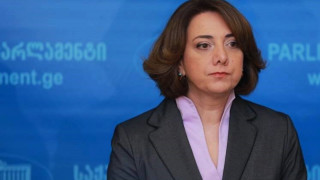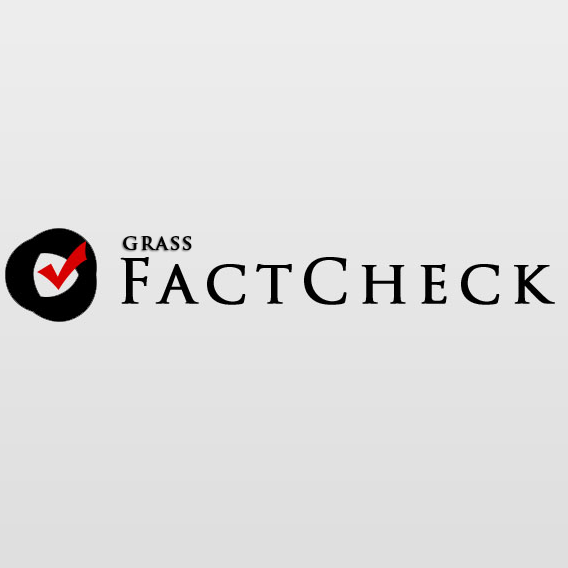Salome Samadashvili: “If we take look at a decade, exports to the EU increased, but less than twofold, whilst exports to Russia increased 13 times which means that our dependence on Russia has expanded.”
Verdict: FactCheck leaves Salome Samadashvili’s statement WITHOUT A VERDICT.
Resume:
The figures provided by Salome Samadashvili are true. However, the MP portrays the reality to be worse than it actually is because foreign trade with Russia was at its minimum in 2012 and fluctuated within the margin of USD 47 million whilst products valued at USD 353 million were exported to the EU. Therefore, Russia’s decision to lift its trade embargo on Georgia would have resulted in a higher growth of trade as compared to the EU where the export flows were already relatively higher. The sharp growth of export to Russia, as underscored in Ms Samadashvili’s statement, is caused by the base effect since the mathematical effect shows reality to be more drastic.
On the other hand, the export dynamic to Russia has been growing annually since 2012 whilst the share of exports to the EU in the total exports has been declining to since 2015-2016 (when it reached maximum). However, the reduction of the relative share of the European Union, along with the return of Russia to the market, was also partly connected with the growth of trade with other countries.
The EU is Georgia’s strategic partner whilst deepening economic ties with Russia entails strategic risks. The context of Salome Samadashvili’s statement is right, The deepening of economic relations with Russia is a threat and a much higher level of integration with the EU is needed. although the figures she provided, which are irrelevant arguments to corroborate her narrative, show the reality to be more drastic than it actually is. Therefore, FactCheck leaves Salome Samadashvili’s statement WITHOUT A VERDICT.
Analysis
Lelo for Georgia member, Salome Samadashvili, stated on air on TV Pirveli: “If we take look at a decade, exports to the EU increased, but less than twofold, whilst exports to Russia increased 13 times which means that our dependence on Russia has expanded.”
The experience of different countries shows that the growth of economic dependency on Russia is a problem since Moscow permanently uses economic leverage to achieve malign political objectives such as: limiting tourism flows, imposing trade bans on certain goods, etc. This is particularly problematic for Georgia.
On the other hand, economic integration with the EU is Georgia’s strategic objective. Georgia signed a free trade agreement with the EU in 2014 which went into force on 1 July 2014. The agreement implies that it is possible to export Georgian produce to the EU markets without any barriers and low tariffs provided it meets certain criteria. However, export to the EU requires compliance with very strict sanitary and phytosanitary standards. In this regard, it is only fair to say that the export of produce to the CIS countries is much easier.
In 2006 when Russia basically imposed a trade boycott on Georgia, Russia’s share in Georgia’s total exports was 18% (USD 154 million). After that, Georgian export to Russia virtually ceased and Russia’s share was about 2% (USD 34 million annually on average) in 2008-2012. Growth of export from Georgia to Russia resumed in 2013 when Moscow opened its market for Georgian produce in the wake of a “normalisation” of relations. At the same time, the export growth dynamic to the EU was low in the years subsequent to signing the free trade agreement between Brussels and Tbilisi. The respective statistics are shown in Table 1:
Table 1: Export dynamics to the EU and Russia, USD Million

Source: National Statistical Office of Georgia
In 2012, export to Russia amounted to USD 47 million. As compared to 2012, export to Russia momentarily increased 4.1 times. In 2021, export to Russia increased to GEL 610 million which is a 13-fold growth as compared to 2012. At the same time, export to the EU increased 1.7 times in 2021 as compared to 2012. Nevertheless, the total export to the markets of the EU member states significantly exceeded export to Russia. However, the share of export to Russia in the total export is rather high for a single country and there was almost always a growth trend in the period of 2012-2021 when the share of export to the EU increased in 2015-2016, although this was then followed by a trend of decrease. In 2019, the share of exports to the EU in the total exports was 22% which is only 0.2 of a percentage point higher as compared to 2014. In 2020-2022, this figure dropped from 16.9% to 14.9%, although that was partially precipitated by the UK’s exit from the EU.
On the other hand, although the general trends of export are unenviable and, therefore, the context of Salome Samadashvili’s statement is true, the sharp growth of export to Russia underlined by the MP is caused by the base effect since the mathematical effect shows reality to be more drastic than it actually is. This is because export to Russia was cut to a minimum in 2012 and even a slight growth would have resulted in a greater increase as compared to the other large trade partners. There is a similar statistical picture vis-à-vis Croatia where export increased 75 times in 2021 as compared to 2012, although the total value of export was only USD 545,000. Naturally, a several-fold increase of export is much more difficult vis-à-vis those countries or groups of countries where the export volume was already high.








